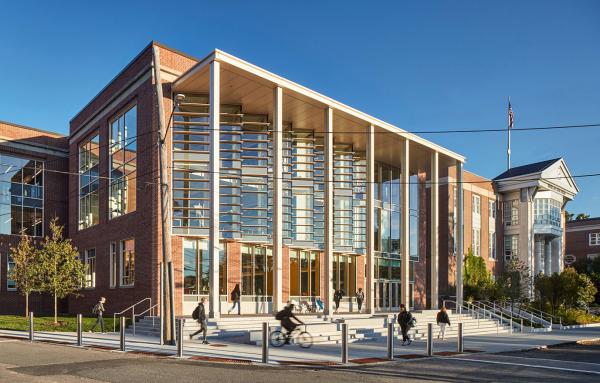Design
Reports from Legacy Projects highlight the potential of Norwood, Xenia, Amelia, and Camp Washington, Ohio.
Stoops, dooryards, and porches make more engaging street frontages for apartments than the typical common lawn.
A gathering in Italy will join new urbanists with international allies to explore and learn from great urbanism past and present.
Modern science explains the role of beauty in creating places that can save the planet. Fortunately, beautiful places are within our power to design and build.
Bulevar de Oriente converts a former sewage way into an exceedingly elegant linear park and a model for global green corridors. Alcuadrado Arquitectos SAS + Secretaria de Vivienda social y hábitat won the 2024 CNU Grand Prize Charter Award.
Revitalization of St. Patrick's and St. Hedwig's Parishes envisions a European-like village between churches in South Bend. The University of Notre Dame won a 2024 CNU Student Grand Prize Charter Award in the Neighborhood, District, and Corridor...
Brookline High School Expansion knits the urban fabric with public school buildings that enhance the public realm in Brookline, Massachusetts. William Rawn Associates won a 2024 CNU Charter Award in the Block, Street, and Building category.
Veridian at County Farm is a compact neighborhood model of sustainability and affordability in Ann Arbor, Michigan. Union Studio and THRIVE Collaborative won a Merit Award as an Emerging Project in the 2024 CNU Charter Awards.
Trappey and Bayou Vermilion Waterfront District Vision Plan will revitalize a waterfront and reuse a vacant industrial site in Lafayette, Louisiana. Lake|Flato Architects won a Merit Award for an Emerging Project in the 2024 CNU Charter Awards.
Smart Streets Design Plan creates a model for better streetscapes and mobility. Buffalo’s Office of Strategic Planning and Stantec won a Merit Award for Emerging Projects in the Neighborhood, District, and Corridor category of the 2024 CNU Charter...
RiverFront Revitalization connects Omaha to the Missouri River and creates a widely used public space. HDR and OJB won a Merit Award in the Region: Metropolis, City, and Town category of the 2024 CNU Charter Awards.
Rebuilding Tremont Street in Mission Hill is a collection of buildings that enhance a neighborhood in Boston. New Urban Partners and Principle Group won a Merit Award in the Block, Street, and Building category of the 2024 CNU Charter Awards.











